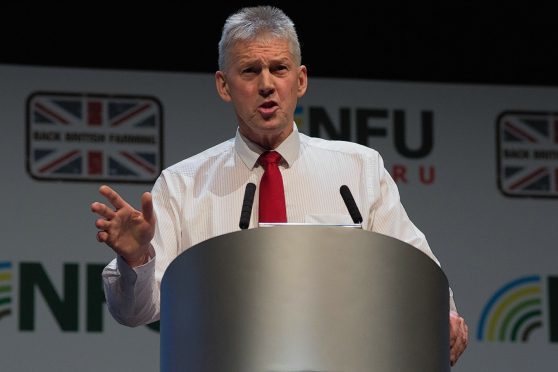Last week’s announcement by Trade Minister Liz Truss that the government was setting up a trade and agriculture commission was a substantial victory for UK farm unions.
Since the beginning of the campaign the unions persuaded over a million people to sign their petition backing UK farming’s high standards.
Their lobbying persuaded opposition MPs to back the campaign and most impressively 22 Tory MPs backed it in a parliamentary vote in defiance of their whips.
Yet the food standards amendment was roundly defeated.
The campaign came up against the hard political reality that no serious government is going to tie its hands behind its back on a key negotiating issue like this when trade talks have only started.
The farm unions’ call for all imported food to meet UK environmental and animal welfare standards is an impossible demand.
Why?
Because the WTO, of which the UK is a fully signed up member, has made it clear that bans on food imports from third countries can only be taken on food safety grounds.
That’s why the EU’s high- profile ban on hormone- treated US beef has been struck down three times as illegal in the WTO court.
The court found the ban had no scientific basis and hormone beef was perfectly safe to eat.
As a result, the US was permitted to levy billions of dollars of punitive tariffs on a range of EU food exports to the US, in retaliation for the illegal beef ban.
In 2012 the dispute was settled when the EU conceded an extra 45,000 tons of US tariff-free hormone-free beef imports to European markets.
In return the US removed its tariffs on EU product.
The EU ban on chlorine- washed chicken is before the WTO and with European Food Safety Agency studies finding there is no risk to public health the EU most likely will lose that case.
So if the UK were to ban food imports with lower standards it would quickly find itself in the dock of the WTO court and bogged down in trade disputes.
The new trade commission will at least provide a platform to raise the issues but it is pretty toothless being advisory.
Whether the industry likes it or not trade deals with the US, Australia and New Zealand will be done and UK farmers are going to have to prepare for a more competitive market.
In US trade talks I suspect the UK will stand firm on keeping hormone beef out of UK markets but an increased tariff-free beef quota will be the price.
On chlorine-washed chicken the compromise might be to allow chicken washed down with lactic acid into UK markets.
Lactic acid is a naturally occurring acid in our bodies and the EU legislated for its use in 2013 as part of a deal with the US to resolve the trade dispute.
Despite the unions’ campaign gathering substantial public support for British food standards, AHDB research shows the majority of consumers are unwilling to pay more for British food.
That leaves farm unions with a powerful argument that if the market won’t pay farmers for the extra costs of higher standards then Government should pay.
- George Lyon is a former MEP. He is a senior consultant for Hume Brophy and sits on the board of farm levy body AHDB.










